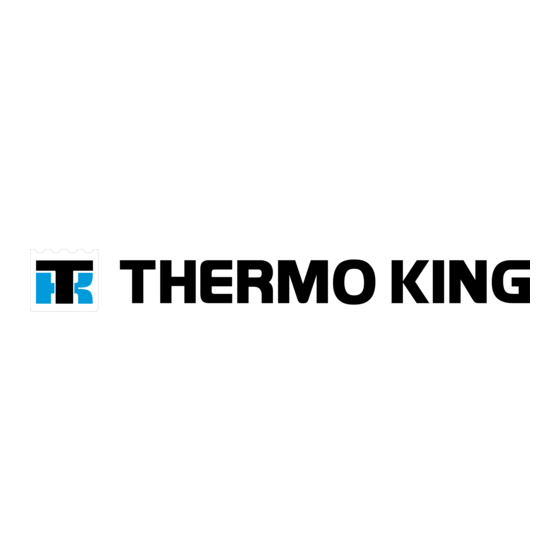
Table of Contents
Advertisement
Quick Links
ThermoLite™ 100W-300W Solar Panel Installation Guide
General Installation Precautions and Specifications
WARNING: Always wear safety glasses and protective gloves when working with batteries. Your
company may require additional PPE. Consult your company safety policy and requirements prior
to installation of this product.
NOTE: This equipment is designed and rated for 12V DC nominal systems.
The solar panel, application surface and air temperature must all be above 45 F (1.3 C).
For best results when applying the panel adhesive, ensure the surface is completely clean using
Isopropal alcohol or appropriate de-greasers. Ensure all cleaning residue is removed and the surface is
dry.
•
The adhesive backing is very aggressive and is difficult to remove once installed.
•
Always ensure the solar panel fuse (located on the positive battery harness) is removed during
installation or service.
•
Always locate the charge controller near the unit's battery to avoid voltage loss in the cable.
100W Base kit Installation
1. Turn off the refrigeration unit and any accessory equipment including standby power connection to
the truck or tractor.
2. Disconnect the negative battery cable of the refrigeration unit and any accessory battery packs used
for lift gate or other auxiliary equipment.
3. Temporarily remove fuse from solar panel
4. Panel installation location on the truck/trailer can be either the front or the back. Factors to be
considered are:
a. If reefer unit is present with existing two-pole (two wire) connections with a wire gauge of 12 AWG
or larger to the liftgate batteries, then the panels should be installed on the roof of the trailer near
the front to utilize the existing connections (Figure 1).
b. Front of the trailer installations are generally preferred so vehicles parked against a building will
not shade the panels and reduce performance
c. Consider installing the panels away from tractor and unit exhaust. The panel may be positioned
length wise or perpendicular to the trailer roof edge. Exhaust soot build-up on the panel can result
in decreased performance of the panel if not cleaned.
d. The junction boxes should be positioned closest to the edge of the trailer end and lined up with
the planned wire route.
e. If snow scrapers are to be used for winter snow removal, position the panel with the long edge
containing the junction box aligned to the front edge of the trailer so the sloped edge of the
junction box is facing forward (Figure 2).
TK 56237-11-IM (Rev. 0, 11/15) Copyright© 2015 Thermo King Corp. Minneapolis, MN, USA
harness.
Advertisement
Table of Contents

Summary of Contents for Thermo King ThermoLite
- Page 1 If snow scrapers are to be used for winter snow removal, position the panel with the long edge containing the junction box aligned to the front edge of the trailer so the sloped edge of the junction box is facing forward (Figure 2). TK 56237-11-IM (Rev. 0, 11/15) Copyright© 2015 Thermo King Corp. Minneapolis, MN, USA...
- Page 2 2 Solar Panels Shown Single Solar Panel Installation Shown Junction Box Figure 2 Figure 1 f. If the battery box is located at the very rear of the trailer, the panels could be located at the rear trailer with protected cable routing down the back (Figure 3). Rear of Trailer Figure 3 5.
- Page 3 Solar Panels Y-Harness Junction Boxes Positive Battery Cable w/Fuse Negative Battery Cable Charge Controller (Install near the battery) Extension Harness Figure 4 6. Ensure the top surface of the installation location is clean and free of any dirt. Suggested cleaners: Isopropal alcohol, de-greaser.
- Page 4 Figure 6 9. Mechanical fasteners used to anchor panel can also include the use of p-clamps to anchor cables as needed. Defer the steps 10 & 11 until after cable installation if that is the case. 10. Use the provided self tapping screws or rivets to anchor the panel through the panel grommets into any exterior rivet strips that will not compromise the integrity of the trailer roof.
- Page 5 13. The extension harnesses are provided with one non-plugged end and a loose connector housing. Verify the polarity of the cable to the panel and charge controller prior to routing the wire. Plan your route and route the wiring starting with the non-plugged end. 14.
- Page 6 22. Reconnect negative battery connections. 23. Verify that the solar panels are charging the batteries by moving the unit into the sunlight and measuring the current on the solar wire harness using a clamp-on DC Ammeter. The charge controller may take up to one minute to turn on and requires the battery voltage to be at 12.3 V or lower to start a charging cycle.


Need help?
Do you have a question about the ThermoLite and is the answer not in the manual?
Questions and answers